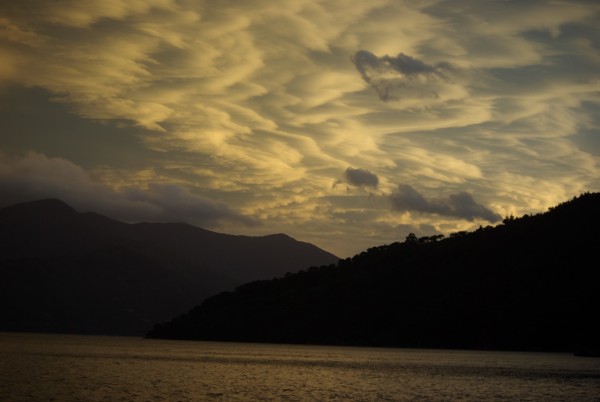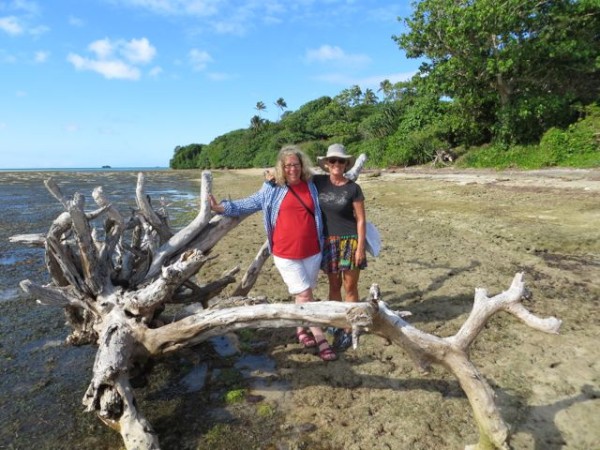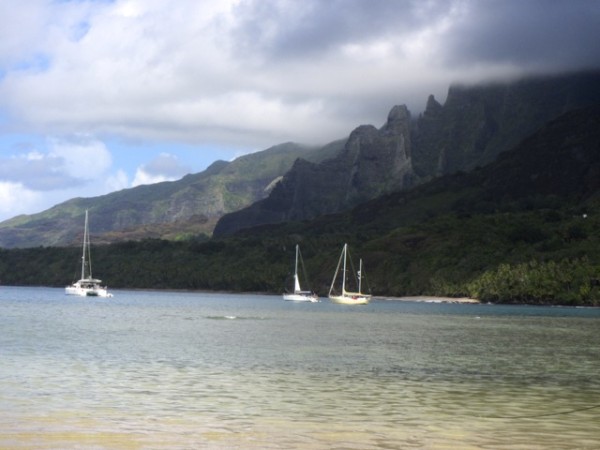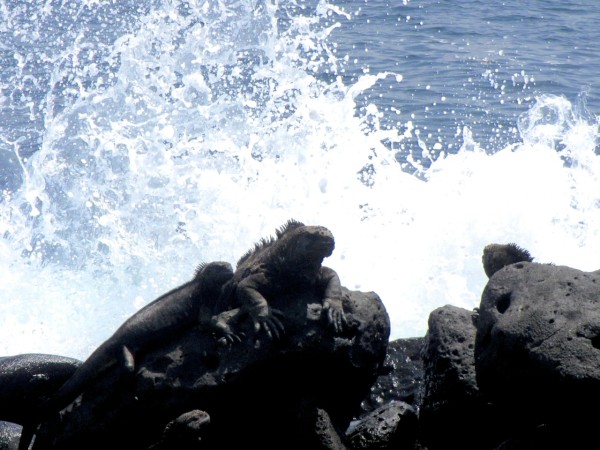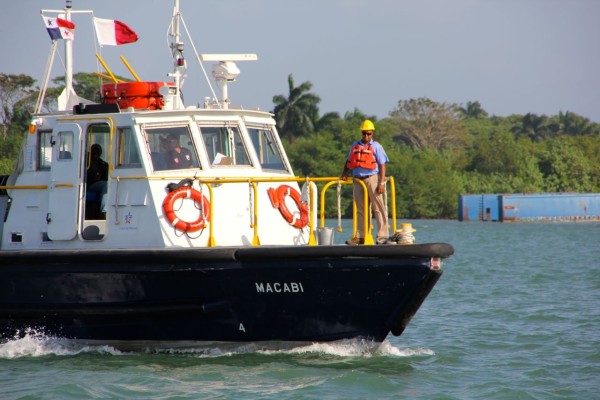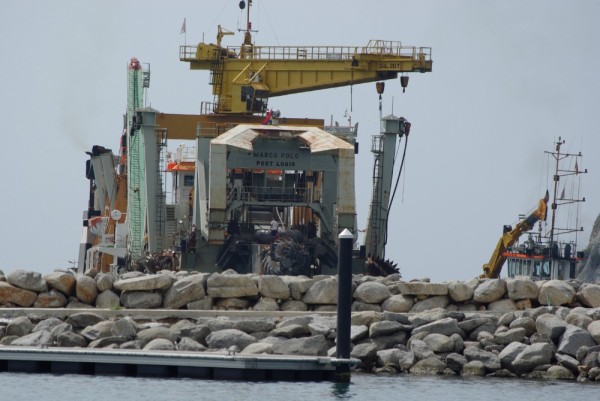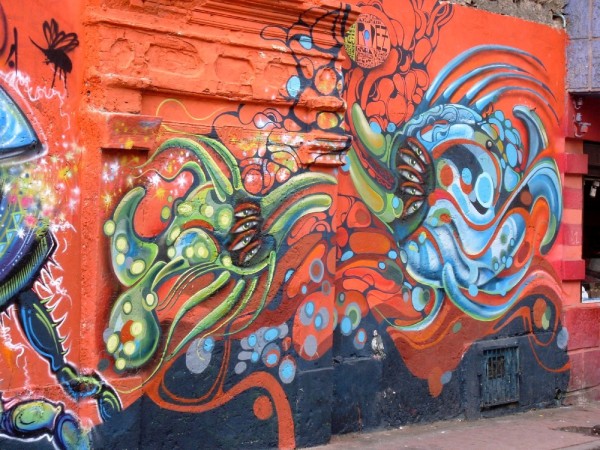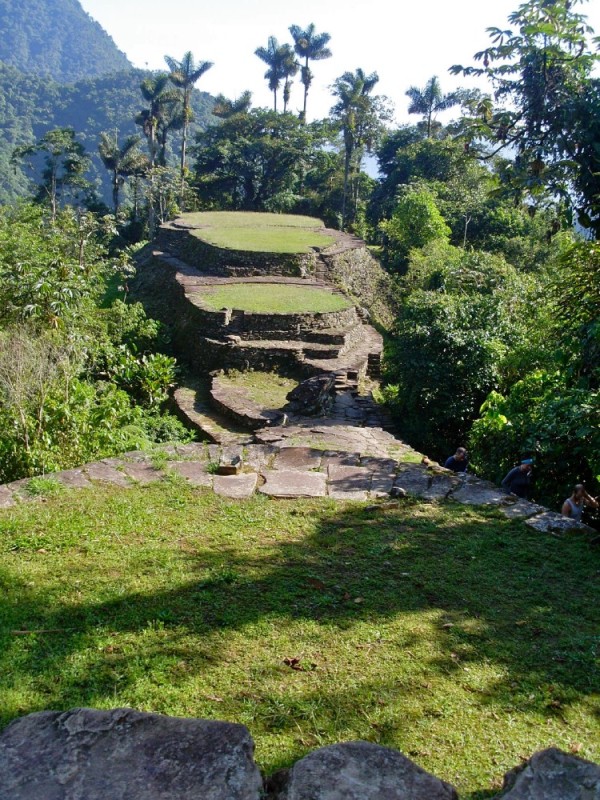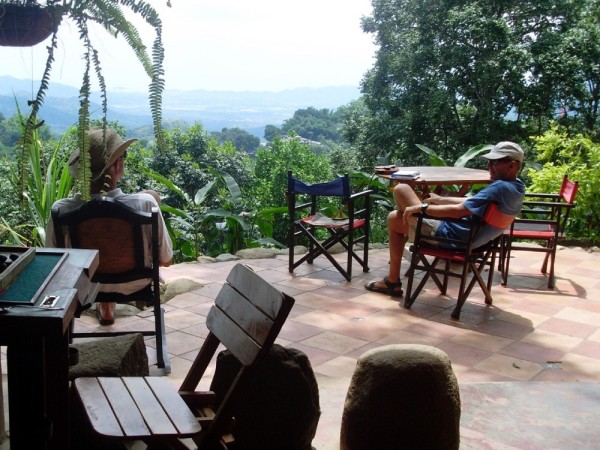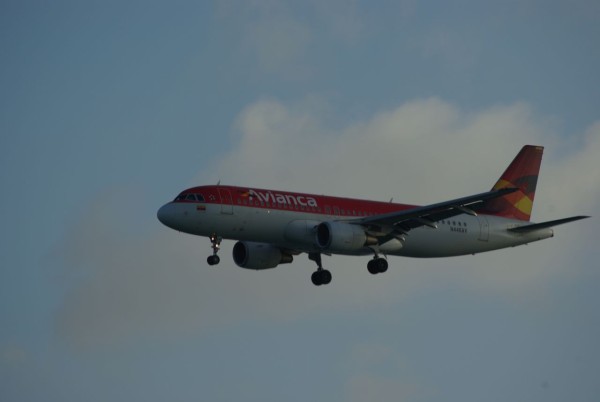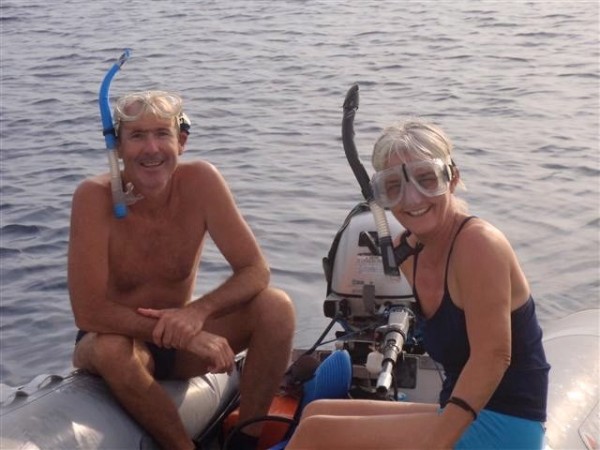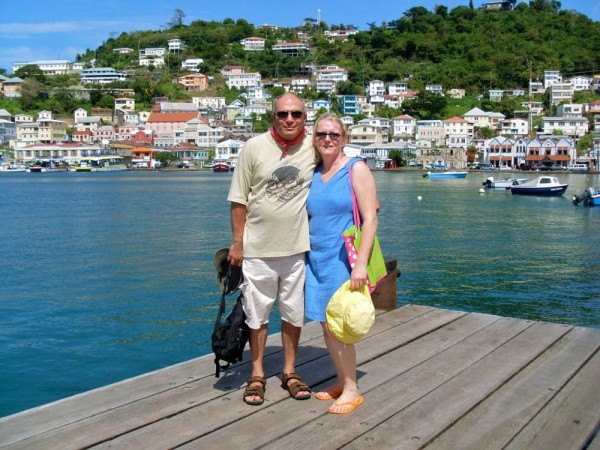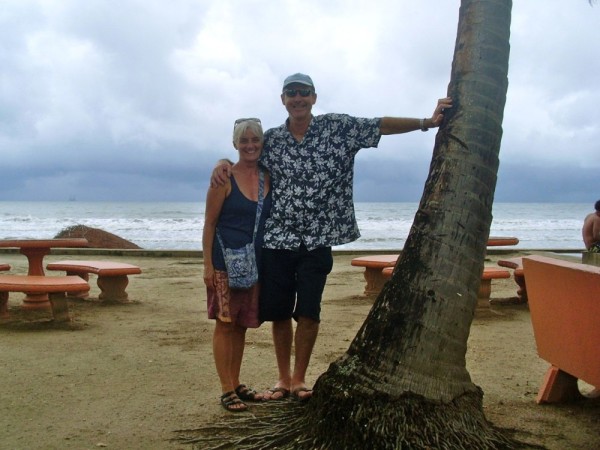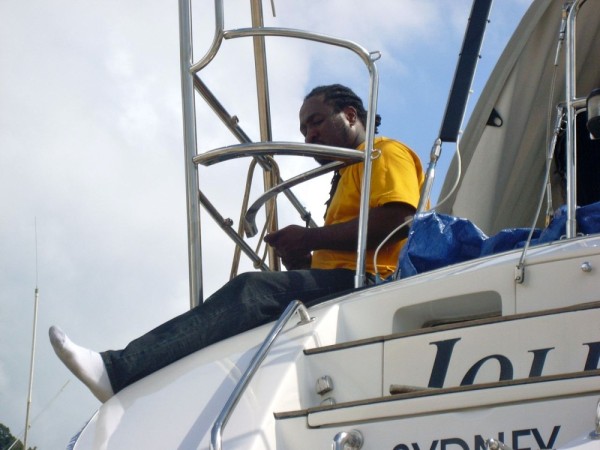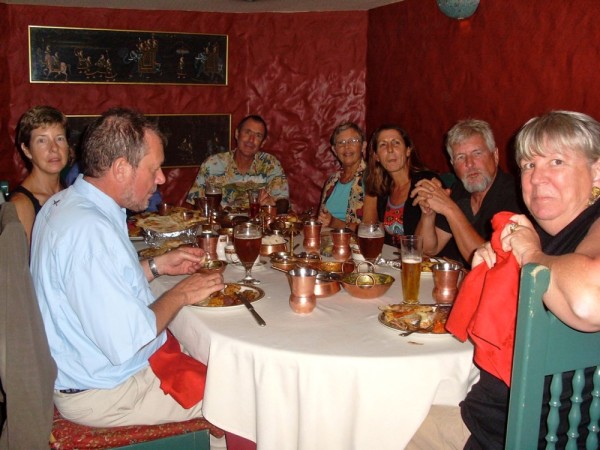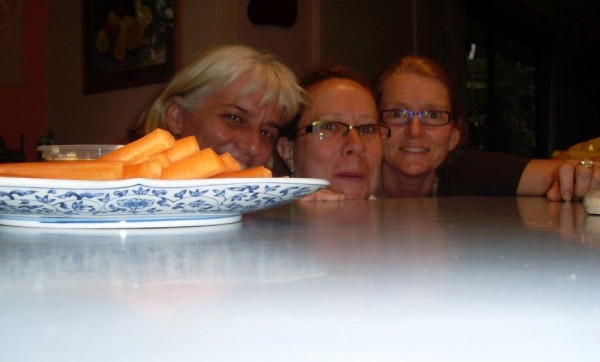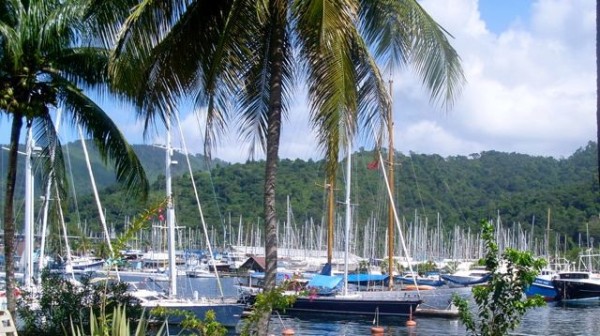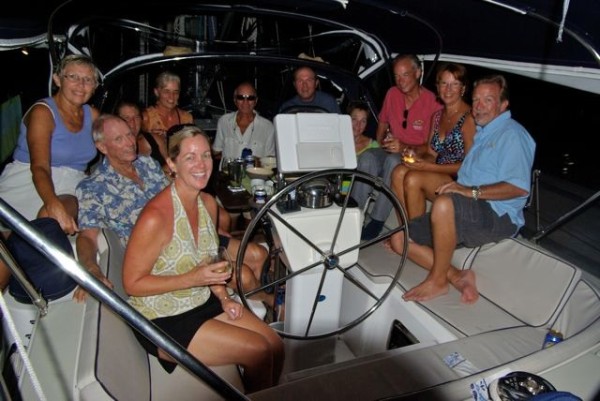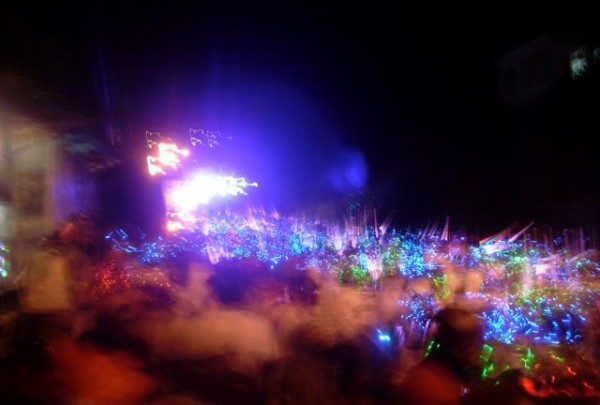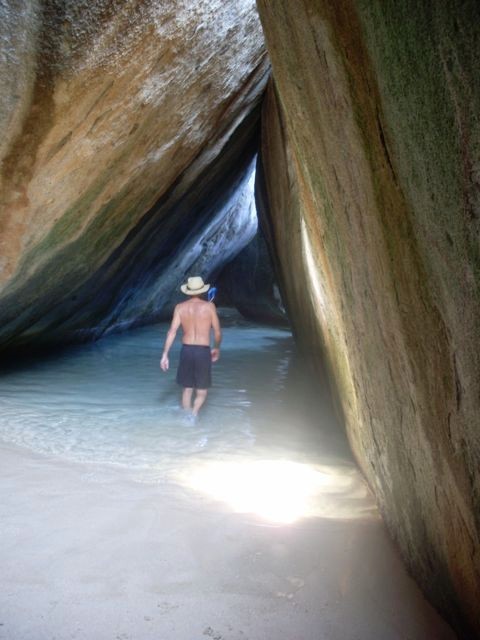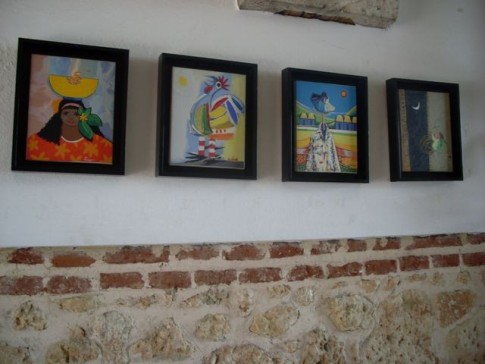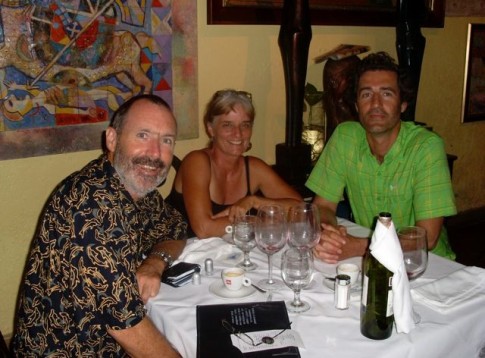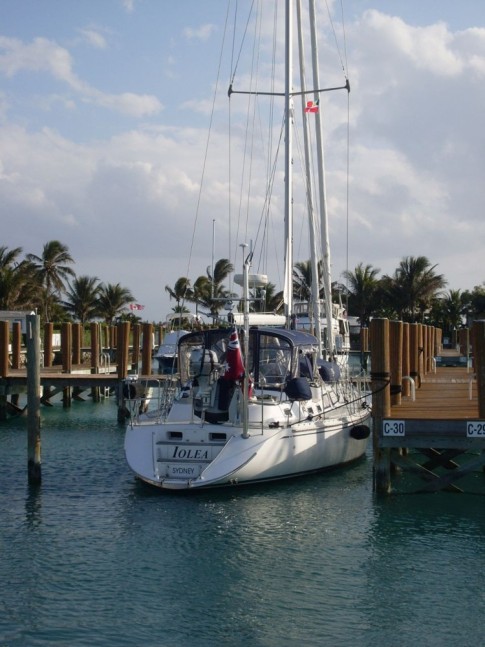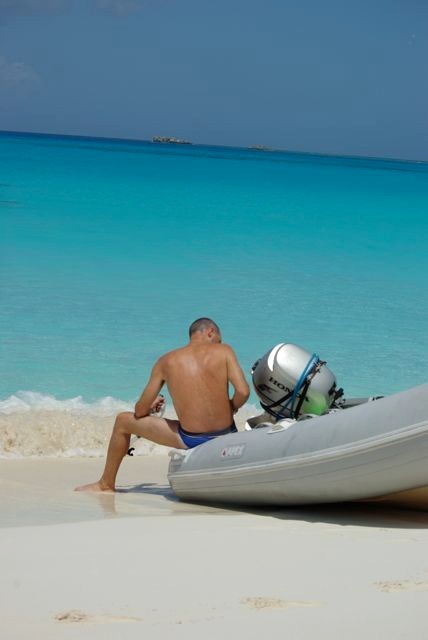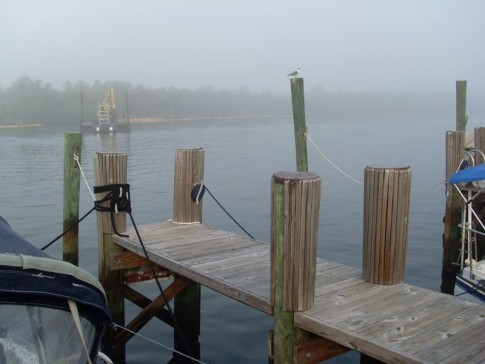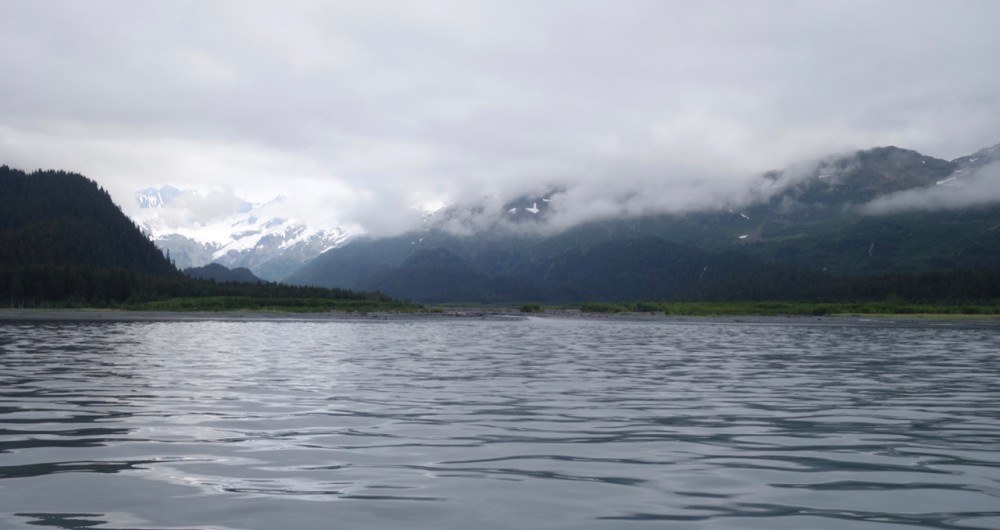
IOLEA 2019
We are an Australian couple who have been cruising on our Hylas 49 since 2010. We are currently in Alaska having sailed from NZ via French Polynesia and Hawaii last year.
IOLEA
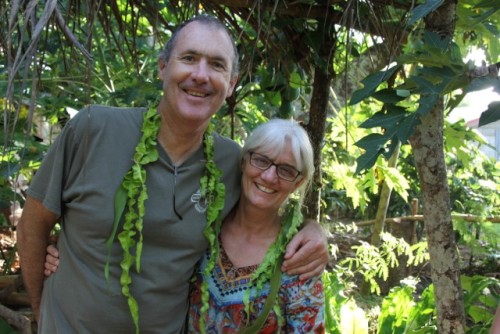
Who: Paul and Kate
Port: Sydney, Australia
USEFUL LINKS
- 2019 Alaska
- 2017 Vanuatu
- 2017 Solomon Islands
- 2017 Kosrae
- 2016-17 The Marshall Islands
- 2016 Kiribati
- 2016 Vanuatu
- 2015 Fiji
- Boat systems
- 2013 Panama to Galapagos
- 2013 galapagos to Marquesas
- 2013 Marquesas
- 2013 Rarotonga
- 2013 Niue
- 2011-12 Trinidad
- 2013-15 New Zealand
- 2013 Tonga
- 2013 French Polynesia
- 2013 Galapagos
- 2012-13 Panama
- 2012 Columbia
- 2012 Bonaire
- 2011 East Caribbean
- 2011 Bahamas
- 2010-11 Florida
- 2010 Annapolis - ICW
- Show All Posts
12 July 2020
04 October 2019
17 September 2019
08 September 2019
27 August 2019
15 August 2019
29 July 2019 | Prince William Sound: Snug Harbor
19 July 2019
17 July 2019
16 July 2019 | Aialik Bay, Kenai Peninsular
15 July 2019
14 July 2019 | Northwestern Glacier
13 July 2019 | Kenai Penninsular
12 July 2019 | Pilot Harbor, Kenai Peninsular
11 July 2019 | Kenai Peninsular
10 July 2019 | Kenai Peninsular
09 July 2019 | Afognak Island
08 July 2019 | Afognak Island
06 July 2019 | Afognak Island
05 July 2019 | Kodiak Island
Passage from Vanuatu to Tarawa, Kiribati: The last day at sea
19 October 2016 | Pacific Ocean
Kate

This is one of those rare passages where you arrive with reluctance. At present we are crawling along at 3 knots and enjoying every minute of it. As with most days, we start with tea and position updates, bring down the latest satellite image and grib file (similar to a synoptic map) for our area then make any adjustments necessary to our sail configuration and assess what miles we need to cover in the next 24 hours. Fortunately for us the weather has been kind and there is no pressure to get to our destination. We could have arrived late this afternoon but that would have meant running the engine and why would we disturb the peace, increase heat. The sea here is a thin wash of blue. It seems to have little density. Waves ripple across the surface from north of the equator and a carnival of clouds on the horizon keep us entertained with their lazy morphing. Paul has the crosswords out and we work through the lattice of words as Icehouse, or Nick Cave, or Radio Head or some other tune plays out across the ocean.
We have the rod out today but no fish so far. A yellow fin tuna would be nice, but a smaller one. Paul still has a bruise on his groin from bringing in the 15kg Mahi Mahi we caught on the 2nd day and the freezer is pretty full. There have been regular changes on our depth instrument which suggests fish so maybe one will hook itself at dusk.
We will cross the equator around 5.30pm and have our gifts for Neptune ready - a basket woven from seaweed by a NZ artist and which is probably better in the sea than on the boat since seaweed never gives up its odour. The other is from Vanuatu. A mobile woven from pandanus by a young girl on Gaua island. These and a dram of vodka should keep him happy for our last 80 miles.
The Clouds below look like Monsters at a concert.
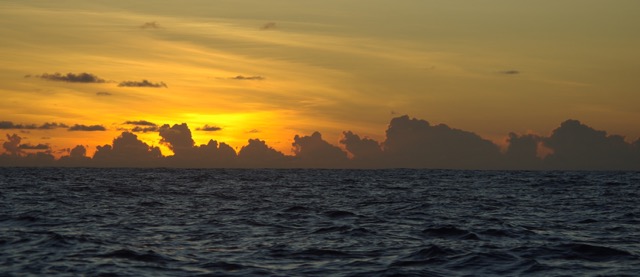
We have the rod out today but no fish so far. A yellow fin tuna would be nice, but a smaller one. Paul still has a bruise on his groin from bringing in the 15kg Mahi Mahi we caught on the 2nd day and the freezer is pretty full. There have been regular changes on our depth instrument which suggests fish so maybe one will hook itself at dusk.
We will cross the equator around 5.30pm and have our gifts for Neptune ready - a basket woven from seaweed by a NZ artist and which is probably better in the sea than on the boat since seaweed never gives up its odour. The other is from Vanuatu. A mobile woven from pandanus by a young girl on Gaua island. These and a dram of vodka should keep him happy for our last 80 miles.
The Clouds below look like Monsters at a concert.

Iolea's Blog is back online on Sailblogs
14 September 2016
Crown of Thorns
10 September 2016 | Port Olry, Santo, Vanuatu
Kate
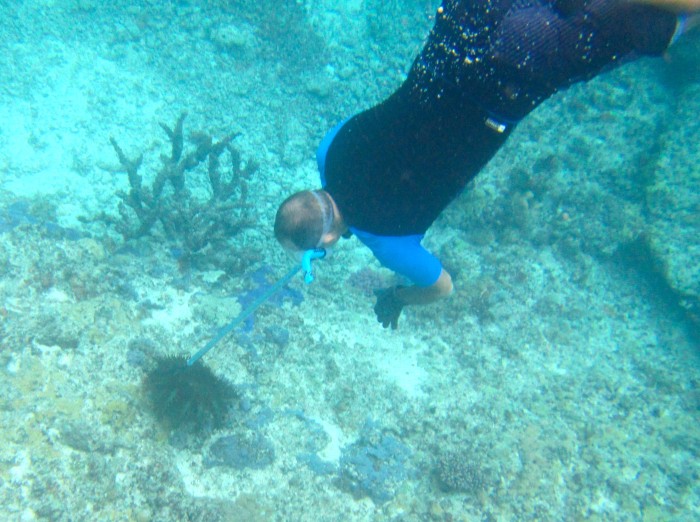
We often come across the occasional Crown of Thorns starfish when we are snorkelling. They are a natural part of the reef and help to curb the spread of faster growing corals like plate and staghorn coral so that slower-growing corals can survive. But sometimes their numbers can get out of balance and recently we were on a small reef at Port Olry on north Santo and they were everywhere so we decided to do some culling. Paul collected over 20 in an area no larger than an Olympic swimming pool. We let them stew overnight in a bucket then dumped them on shore away from walking areas. No doubt there are a few left but at least the reef may have time to breath and won't be inundated when they start to spawn from October. (GBRMPA in Oz is great source of info).
Lakona Bay Custom Festival (Day 2)
27 August 2016 | Lakona Bay, Gaua
Kate
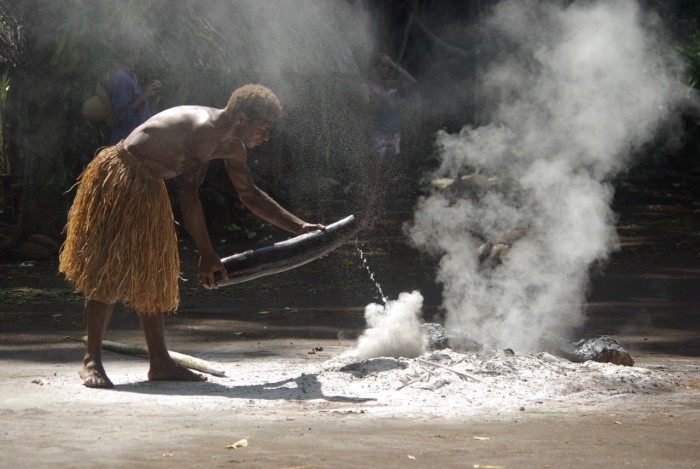
Day 2 was the day for men's custom dancing; and for men in general. The remains of last night's bonfire was doused and then the dance arena delineated by the spirits who had run the beach over the last few days. Women were not to enter the custom dance area and the spirits remained dancing the perimeter throughout the dancing, whipping their tails at anyone who strayed too close.
.jpg)
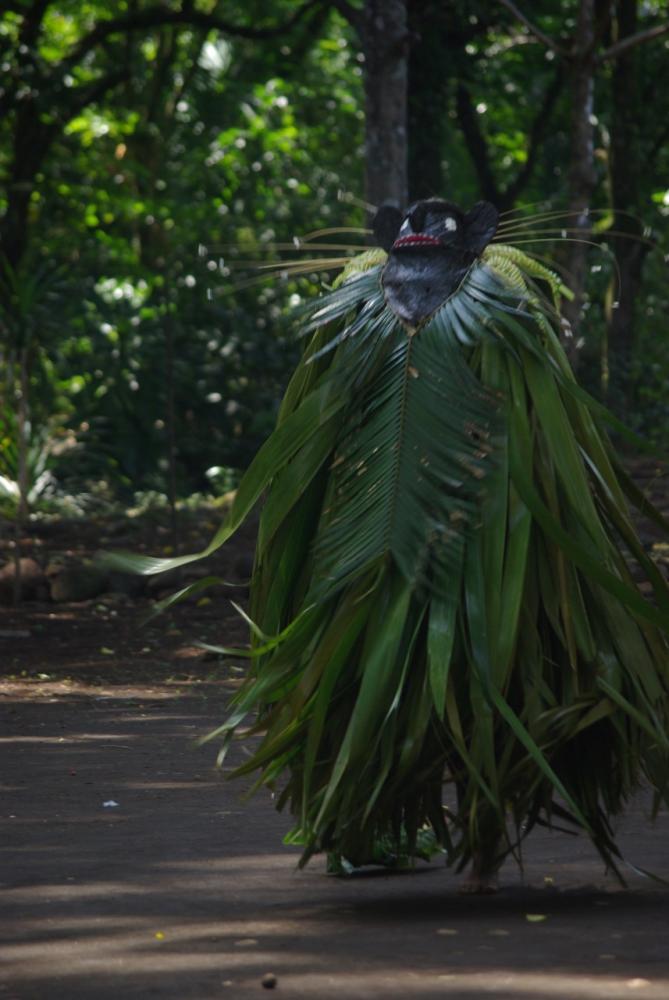
There were three forms of custom dance, each beautifully costumed. The first two were similar but the masks were from different tribes. The first photo is the masks from John Stark's tribe.
.jpg)
.jpg)
The final and most important of the dances came last and was heralded by drums and Chief John.
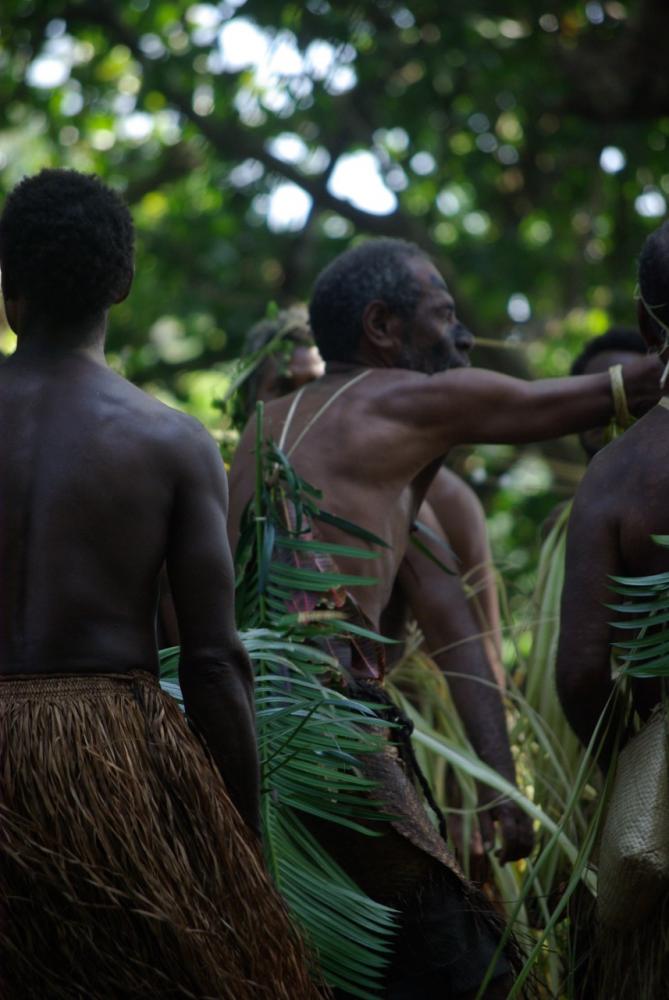

Seven spirits in all were called in and danced. Five of these with tall cone like masks represented birds and fish. The other two represented the banana spirit whose eyes were poked out by arrows when he stole bananas and the other is the lion fish with his dangerous spikes.
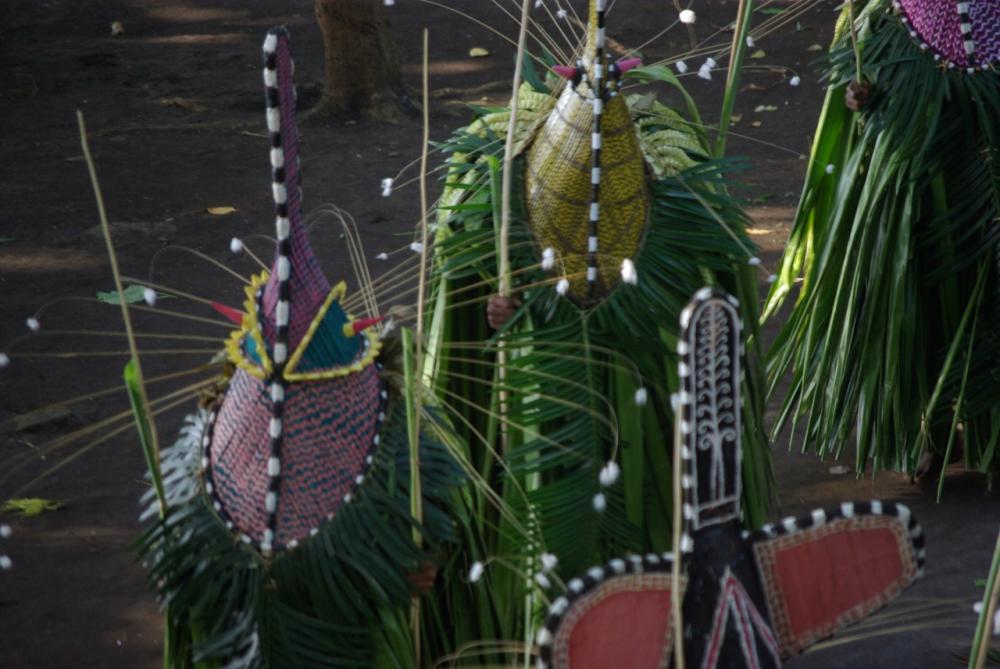
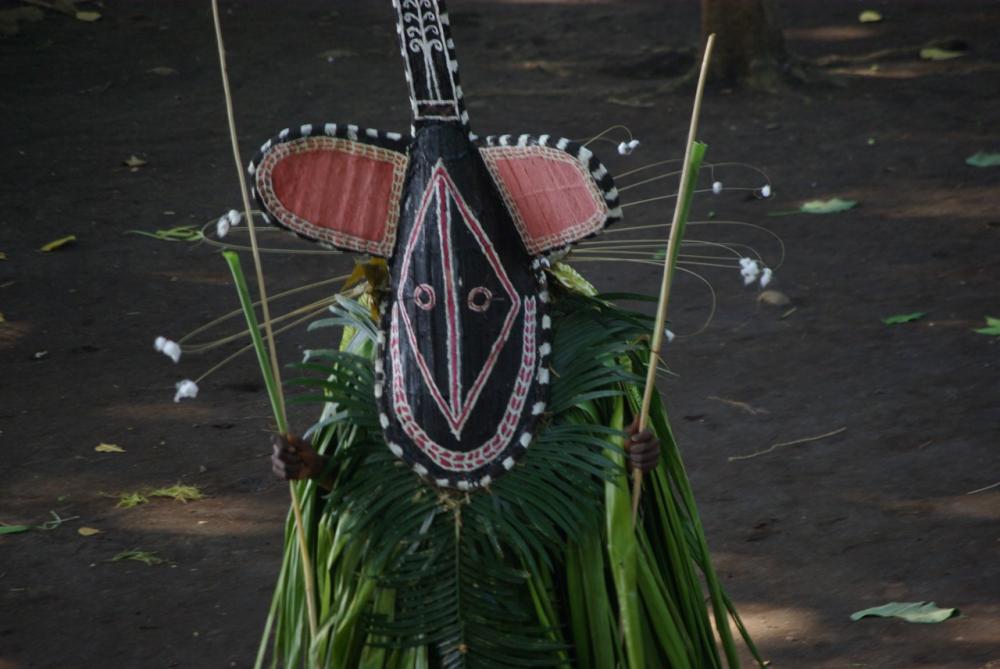
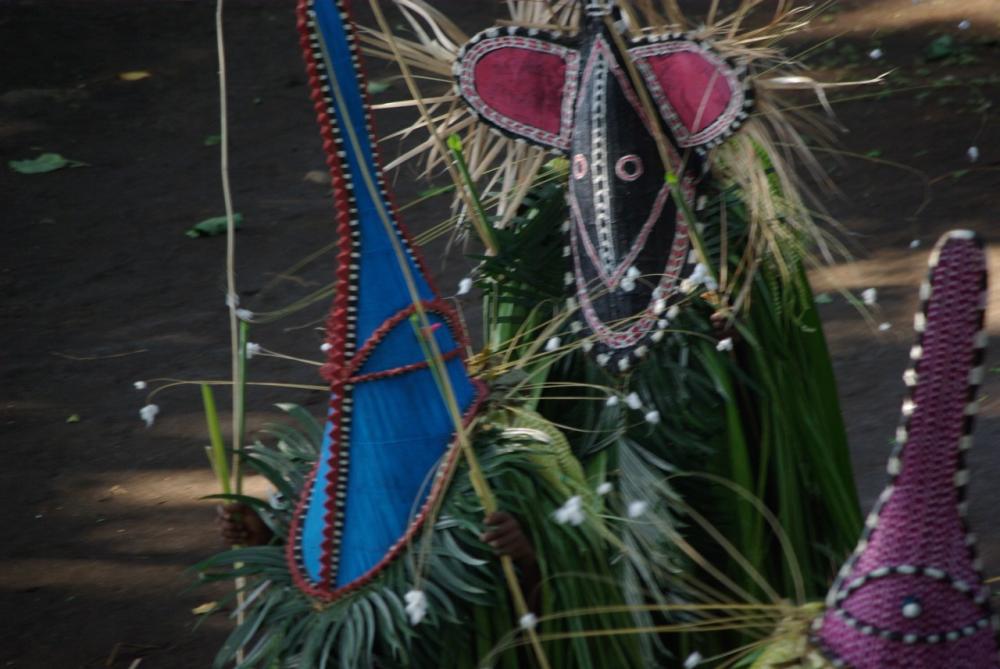
While the custom dancing dominated the day, there were other activities and lighthearted moments. At lunch there was a tug-of-war between married and unmarried men. The first attempt was with a vine cut from the bush. Unfortunately that snapped just as the married men were dragging the younger ones across the line. The yachties were enlisted to assist with a new and stronger rope. This time the unmarried men were the victors.
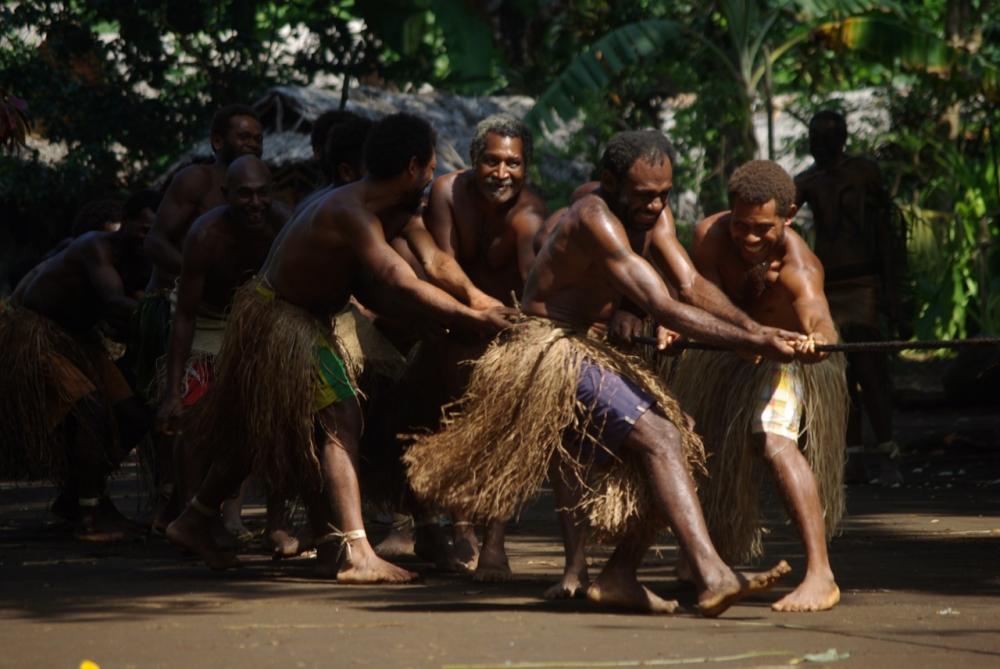
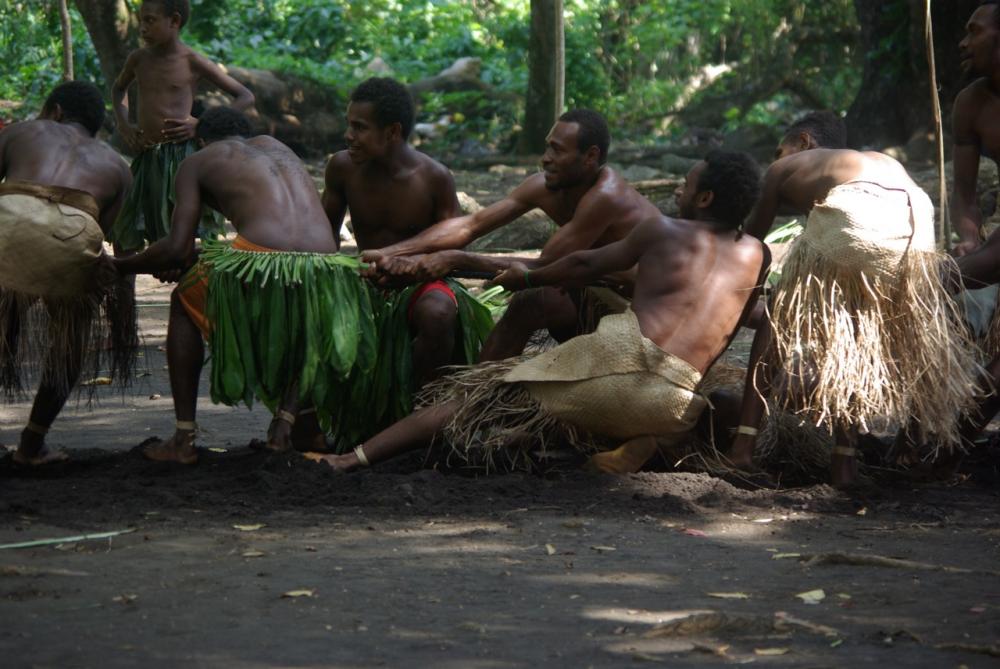
There was also a magic show. A practice which is not custom but which they seem to think is important for a festival. Of course for the yachties the tricks were fun but transparent. But many of the villagers were completely taken by some of tricks and there was general alarm among women and children when in one trick a man was "killed" to then be magically revived. They got the killed part sorted but forgot to bring him back to life! In the end it didn't matter whether the tricks were executed well or not, it was just a lot of fun.

At the end of the day everyone went home to change for the Festival closing. It was very odd to return and see the villagers back in western clothes. It was like we had all participated in making a film. I don't know how much of the festival was authentic but guess probably most. There was certainly borrowing from other areas i.e. The Solomon's bamboo music (although this was acknowledged and the villagers just love this music) and the magic show. But none of that mattered. For us, the Festival was a great success.
.jpg)

There were three forms of custom dance, each beautifully costumed. The first two were similar but the masks were from different tribes. The first photo is the masks from John Stark's tribe.
.jpg)
.jpg)
The final and most important of the dances came last and was heralded by drums and Chief John.


Seven spirits in all were called in and danced. Five of these with tall cone like masks represented birds and fish. The other two represented the banana spirit whose eyes were poked out by arrows when he stole bananas and the other is the lion fish with his dangerous spikes.



While the custom dancing dominated the day, there were other activities and lighthearted moments. At lunch there was a tug-of-war between married and unmarried men. The first attempt was with a vine cut from the bush. Unfortunately that snapped just as the married men were dragging the younger ones across the line. The yachties were enlisted to assist with a new and stronger rope. This time the unmarried men were the victors.


There was also a magic show. A practice which is not custom but which they seem to think is important for a festival. Of course for the yachties the tricks were fun but transparent. But many of the villagers were completely taken by some of tricks and there was general alarm among women and children when in one trick a man was "killed" to then be magically revived. They got the killed part sorted but forgot to bring him back to life! In the end it didn't matter whether the tricks were executed well or not, it was just a lot of fun.

At the end of the day everyone went home to change for the Festival closing. It was very odd to return and see the villagers back in western clothes. It was like we had all participated in making a film. I don't know how much of the festival was authentic but guess probably most. There was certainly borrowing from other areas i.e. The Solomon's bamboo music (although this was acknowledged and the villagers just love this music) and the magic show. But none of that mattered. For us, the Festival was a great success.
The Lakona Festival (Day 1)
26 August 2016
Festival day and there are 6 boats in the anchorage (us, The Classic, Belena, Taruanui, Fiju, Mintaka). The festival is designed to keep custom alive on the island and so while the boats and tourists are important, it is also for the young people.
At 8.30am we gathered on the shore under a Banyon tree and waited. All the villagers, everyone, was in custom dress and so the feeling was of moving back in time. They stayed in custom dress until the end of the festival, including the pikininies who clearly enjoyed their grass skirts.
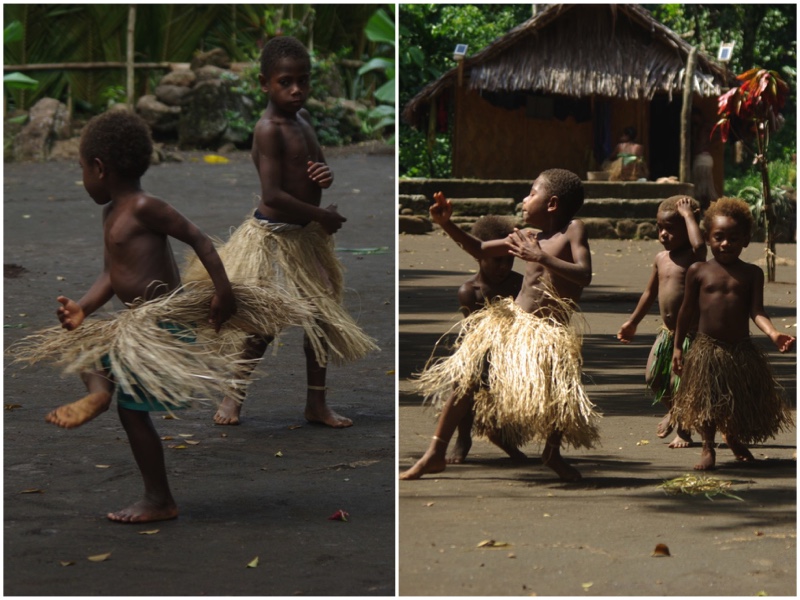
Lakona Bay village is a traditional custom village with a large square of hard packed dirt for custom dancing and games. A massive Banyon tree dominates one side and two others have covered benches. The newly built stage sat under the tree and a cooking hut and canteen with food for sale was decorated at the far end of the square.
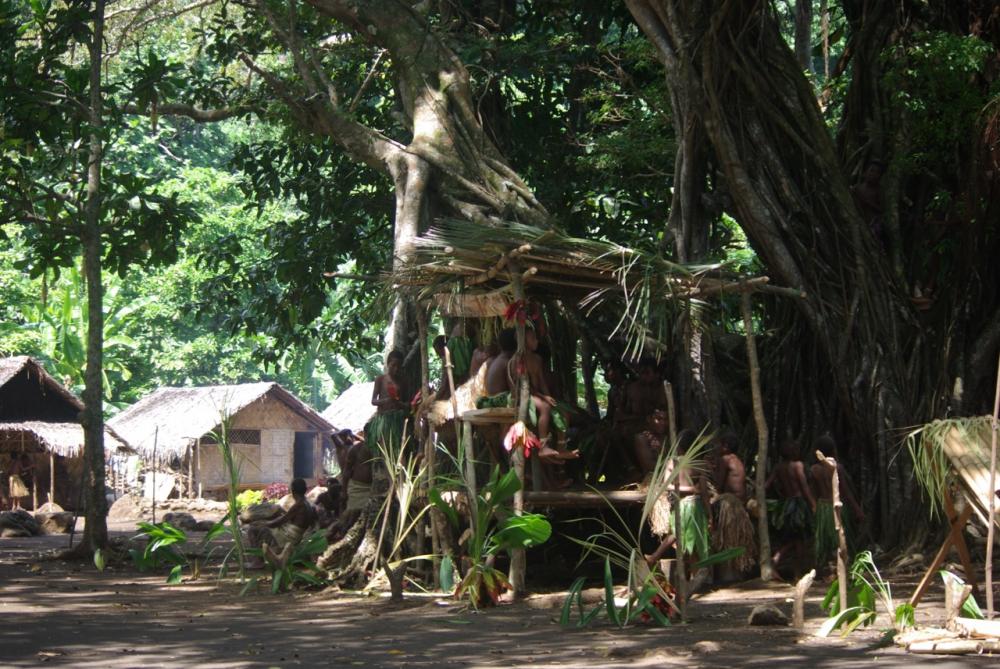
An entryway to the square was fashioned out of wood for the festival and it was through this that we arrived to the welcoming ceremony and welcome song. Each of us was given a lei and then each and every villager came and shook our hands. I think we shook hands with more than 80 people!
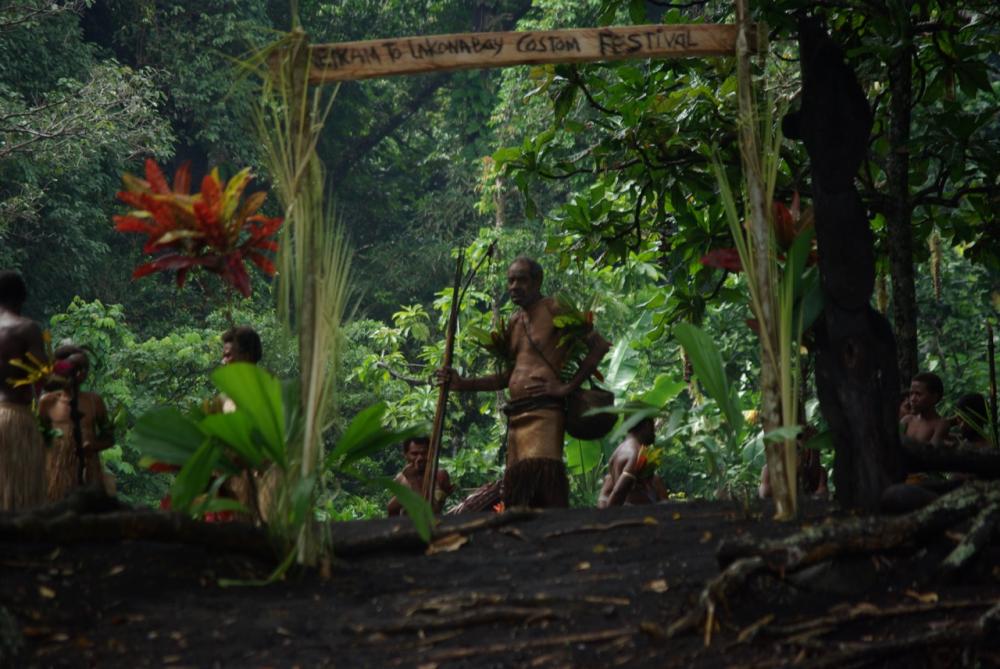
The first day of the festival was about village life and skills. It started with a dance by the women then moved on to a variety of demonstrations and activities including, using a Ni-van bow and arrow (the arrow doesn't have a feather so they are hard to direct) and rowing outrigger canoes. Four canoes each with a Ni-van and a cruising woman lined up halfway along the beach for a race to the other end. The canoes move quickly but not always in the direction you want them to! Pascale on Fuji came first but my valiant cries of "Starboard" didn't work for canoes and we ran into a competitor and came 3rd.
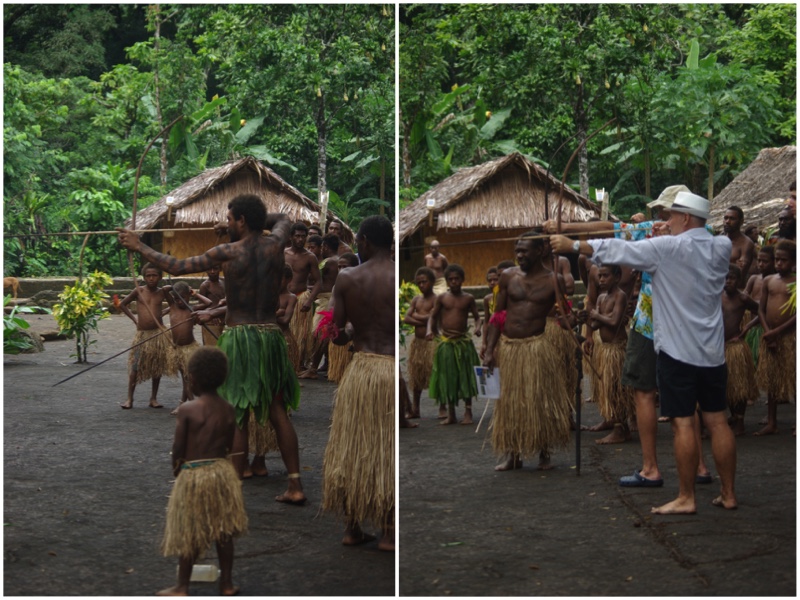
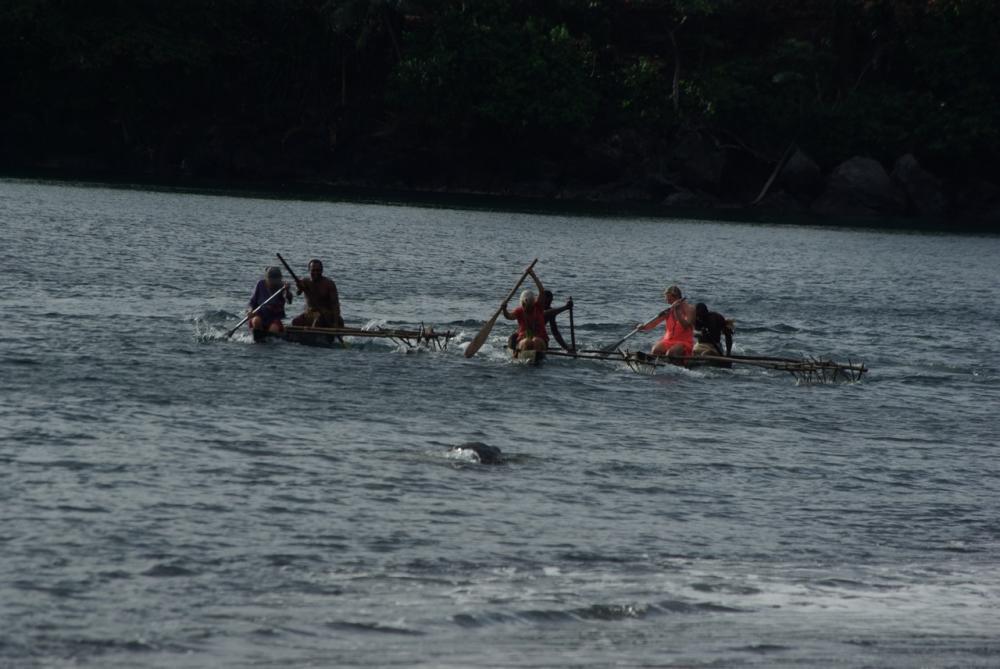
Meanwhile there was constant cooking happening in an open hut where they showed us different methods of preparing laplap, root vegetables, and coconut milk. Coconut milk boiled in coconut shells becomes almost crystalline and brown and very sweet. Poured into leaves and buried in an earth oven it stays white and creamy and less sweet.
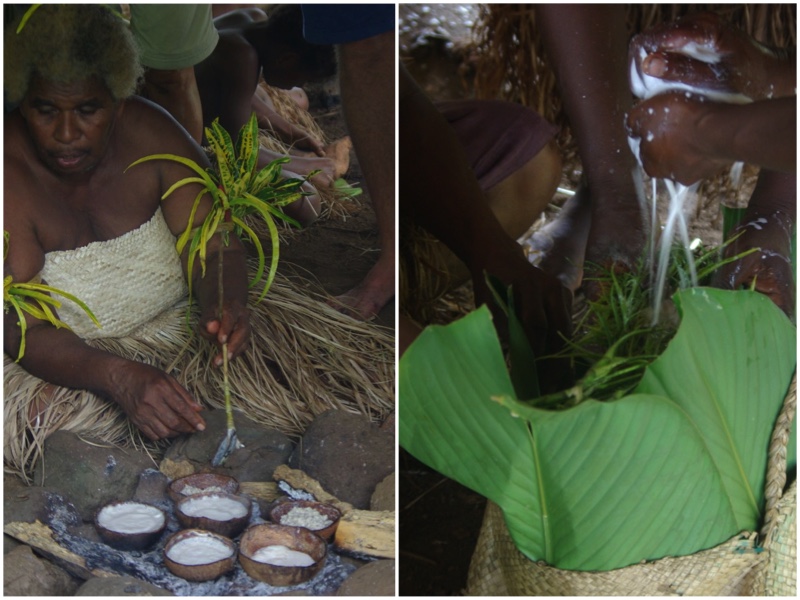
The oven is built from the stalk of a large palm and layered with hot stones and food encased in leaf parcels. Once full it is topped with palm fronds to keep in the heat.

There were also weaving demonstrations. For the most part weaving is a female occupation. The exception is for roofing. The layers of a roof are made by wrapping pandanus leaf over a bamboo strip and securing it with dried strands which are then broken off before the next palm is neatly tucked under the exposed end of the strand and threaded by another strand and so on. The sheafs of leaves are then placed in layers on the roof much as roof tiles are and secured to the underlying bamboo structure with vines. They claim a closely thatched roof can last 10 years or more.

Women weave baskets and basketry throughout Vanuatu is beautiful and practical. In the photos above, on the bottom left the women are making trays for food and to the right a chicken basket is taking form. Chicken baskets are exquisite. The weaving is completely even so that it forms a perfect orb. Its hard to believe that it is used to carry a live chicken but makes perfect sense.
Learning to weave starts early. This girl whipped up a decoration of box, cube and star in 15 minutes. I found it in my basket when we left for the day which was lovely. The cubes and boxes are used as balls for makeshift cricket and soccer. I thought of bringing manufactured balls on another visit but then realised that these are just as fun and far more renewable and so took my western hat off.
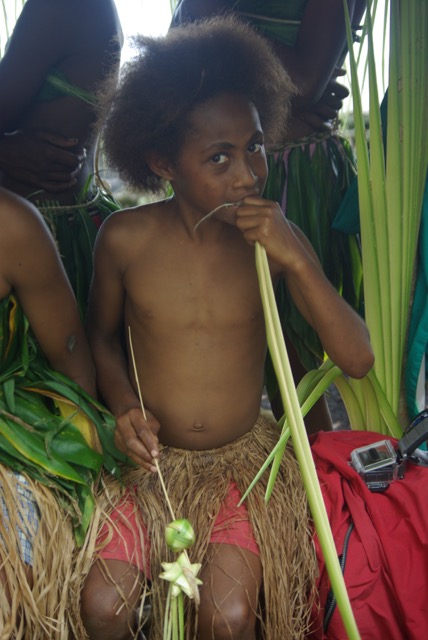
A not so custom practice is playing Bamboo pipes - its actually from the Solomon Islands but was introduced to some locals up near Losolava on the north of Gaoa and the locals love it. They put out a pretty good sound and look great. The sound is achieved by either blowing on the smaller pipes or paddling the larger groups.
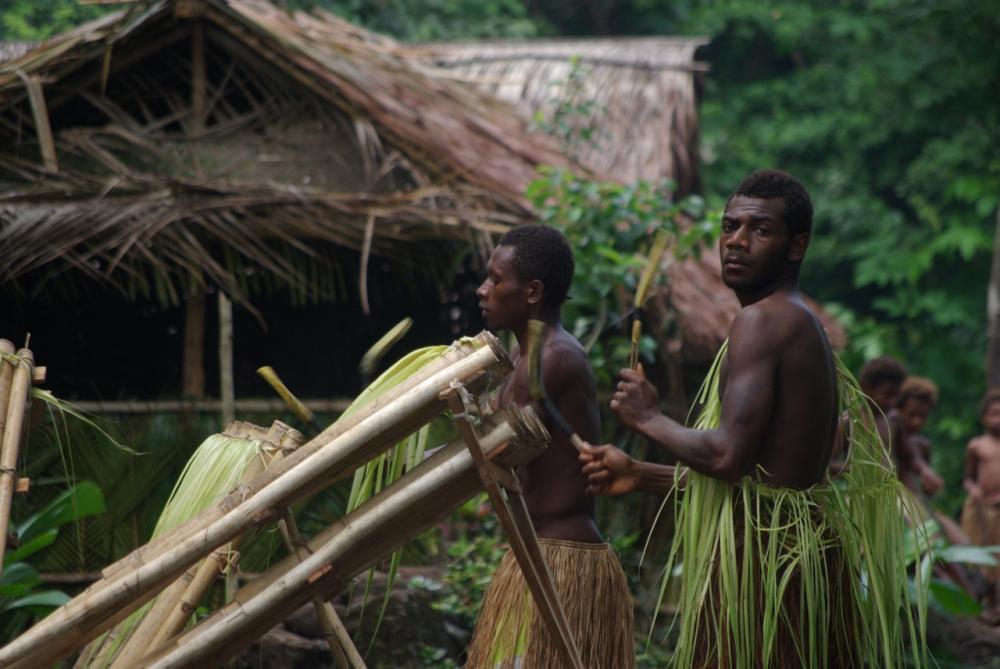
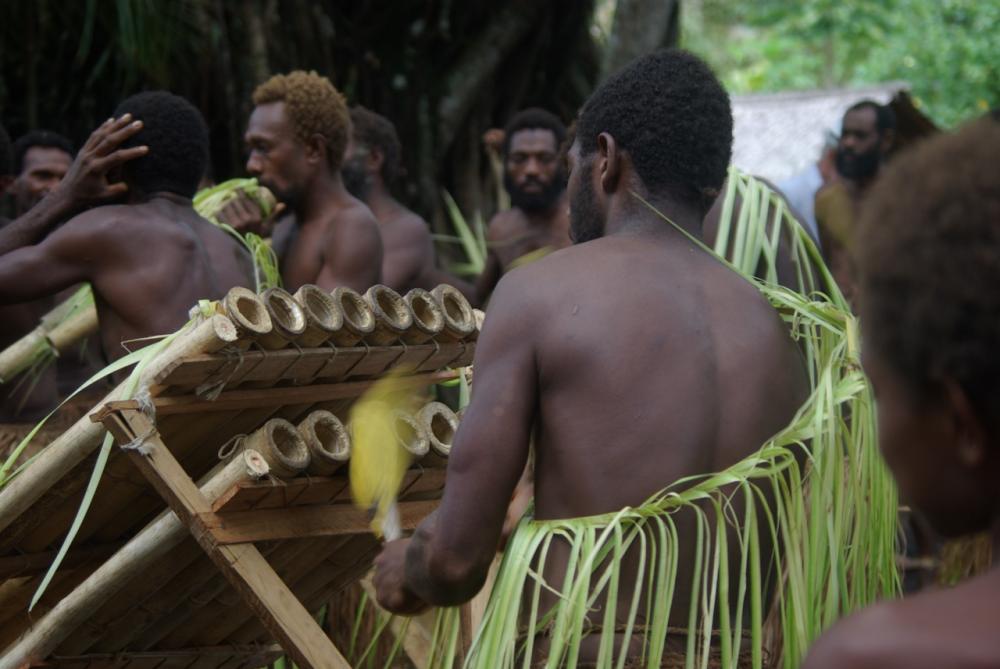
Looking back its hard to imagine that so much was fit into one day. There was barely a minute to spare. There was a re-enactment of war and the manner in which Chiefs reconcile differences which, as usual, involves the exchange of pigs but other sanctions or recompense can be included. We were also shown a custom wedding which, again, involves a pig. This time as a gift to the bride's family. Once she is married the woman goes to live in her husband's village.
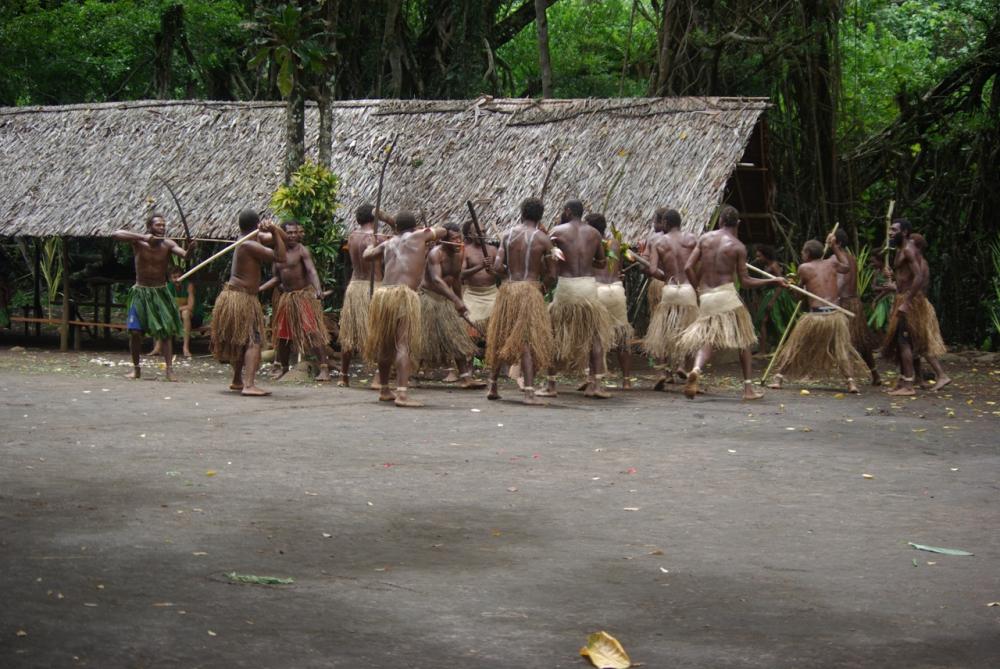
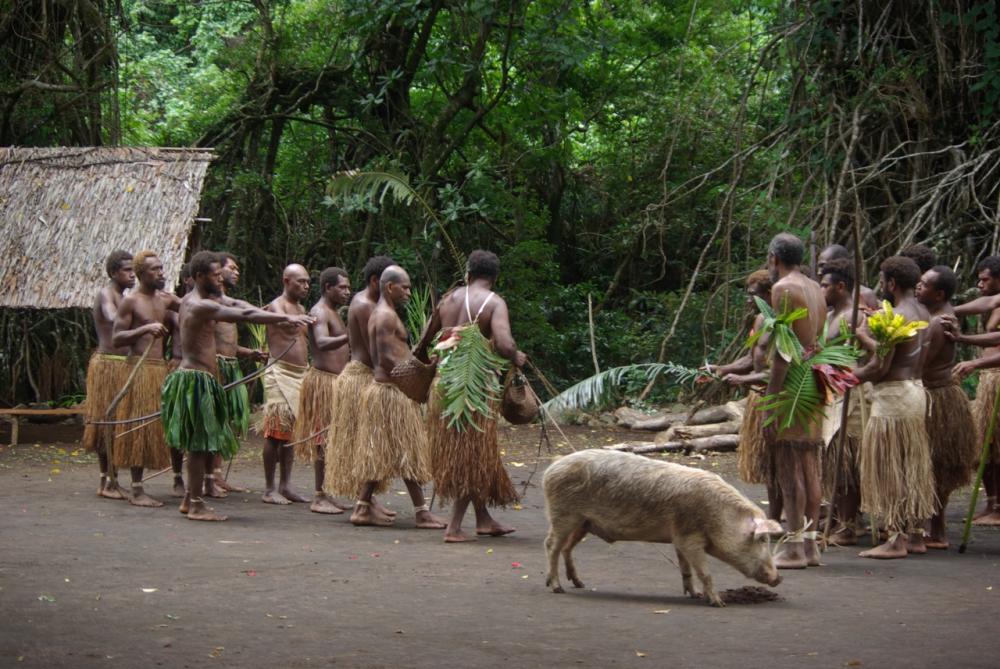
The last demonstration for the day before settling in for a feast, bonfire and music, was the women's water music which was held in the small river beside the village. This was a little disappointing. In previous years it had been on the sea shore in the morning when the sea is calm and the light in front of the musicians. Even so, water music is a marvel to see and hear as the women create a percussion of drum and cymbal-like effects with their arms and hands.
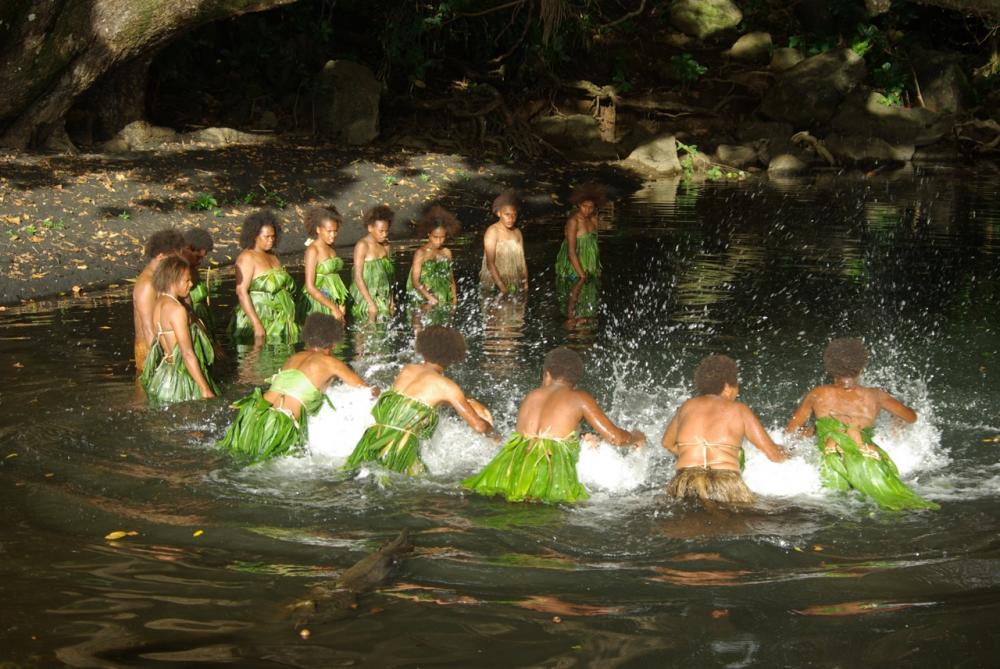
At 8.30am we gathered on the shore under a Banyon tree and waited. All the villagers, everyone, was in custom dress and so the feeling was of moving back in time. They stayed in custom dress until the end of the festival, including the pikininies who clearly enjoyed their grass skirts.

Lakona Bay village is a traditional custom village with a large square of hard packed dirt for custom dancing and games. A massive Banyon tree dominates one side and two others have covered benches. The newly built stage sat under the tree and a cooking hut and canteen with food for sale was decorated at the far end of the square.

An entryway to the square was fashioned out of wood for the festival and it was through this that we arrived to the welcoming ceremony and welcome song. Each of us was given a lei and then each and every villager came and shook our hands. I think we shook hands with more than 80 people!

The first day of the festival was about village life and skills. It started with a dance by the women then moved on to a variety of demonstrations and activities including, using a Ni-van bow and arrow (the arrow doesn't have a feather so they are hard to direct) and rowing outrigger canoes. Four canoes each with a Ni-van and a cruising woman lined up halfway along the beach for a race to the other end. The canoes move quickly but not always in the direction you want them to! Pascale on Fuji came first but my valiant cries of "Starboard" didn't work for canoes and we ran into a competitor and came 3rd.


Meanwhile there was constant cooking happening in an open hut where they showed us different methods of preparing laplap, root vegetables, and coconut milk. Coconut milk boiled in coconut shells becomes almost crystalline and brown and very sweet. Poured into leaves and buried in an earth oven it stays white and creamy and less sweet.

The oven is built from the stalk of a large palm and layered with hot stones and food encased in leaf parcels. Once full it is topped with palm fronds to keep in the heat.

There were also weaving demonstrations. For the most part weaving is a female occupation. The exception is for roofing. The layers of a roof are made by wrapping pandanus leaf over a bamboo strip and securing it with dried strands which are then broken off before the next palm is neatly tucked under the exposed end of the strand and threaded by another strand and so on. The sheafs of leaves are then placed in layers on the roof much as roof tiles are and secured to the underlying bamboo structure with vines. They claim a closely thatched roof can last 10 years or more.

Women weave baskets and basketry throughout Vanuatu is beautiful and practical. In the photos above, on the bottom left the women are making trays for food and to the right a chicken basket is taking form. Chicken baskets are exquisite. The weaving is completely even so that it forms a perfect orb. Its hard to believe that it is used to carry a live chicken but makes perfect sense.
Learning to weave starts early. This girl whipped up a decoration of box, cube and star in 15 minutes. I found it in my basket when we left for the day which was lovely. The cubes and boxes are used as balls for makeshift cricket and soccer. I thought of bringing manufactured balls on another visit but then realised that these are just as fun and far more renewable and so took my western hat off.

A not so custom practice is playing Bamboo pipes - its actually from the Solomon Islands but was introduced to some locals up near Losolava on the north of Gaoa and the locals love it. They put out a pretty good sound and look great. The sound is achieved by either blowing on the smaller pipes or paddling the larger groups.


Looking back its hard to imagine that so much was fit into one day. There was barely a minute to spare. There was a re-enactment of war and the manner in which Chiefs reconcile differences which, as usual, involves the exchange of pigs but other sanctions or recompense can be included. We were also shown a custom wedding which, again, involves a pig. This time as a gift to the bride's family. Once she is married the woman goes to live in her husband's village.


The last demonstration for the day before settling in for a feast, bonfire and music, was the women's water music which was held in the small river beside the village. This was a little disappointing. In previous years it had been on the sea shore in the morning when the sea is calm and the light in front of the musicians. Even so, water music is a marvel to see and hear as the women create a percussion of drum and cymbal-like effects with their arms and hands.

| Vessel Name: | Iolea |
| Vessel Make/Model: | Hylas 49 |
| Hailing Port: | Sydney, Australia |
| Crew: | Paul and Kate |
| About: | We are an Australian couple on a 2003 Hylas 49 and have been cruising from the Caribbean to the South Pacific since 2010. We are now in Alaska after 6 years in the tropical Pacific |
| Social: |
Iolea's Photos - Main
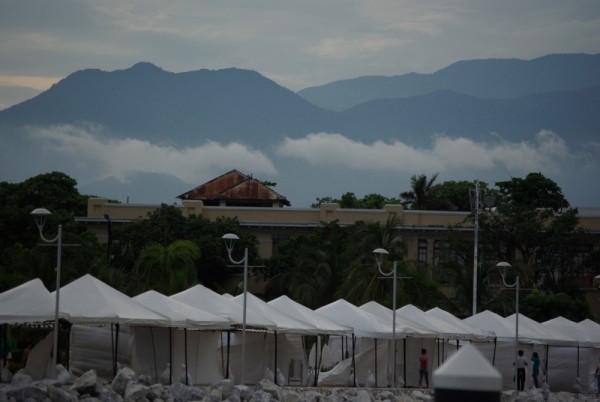 |
The colour of the sunset is not enhanced. That is how it looked - blood red.
The remaining three photos are arriving in Santa Marta
9 Photos
Created 19 June 2012
|
IOLEA

Who: Paul and Kate
Port: Sydney, Australia
USEFUL LINKS
- 2019 Alaska
- 2017 Vanuatu
- 2017 Solomon Islands
- 2017 Kosrae
- 2016-17 The Marshall Islands
- 2016 Kiribati
- 2016 Vanuatu
- 2015 Fiji
- Boat systems
- 2013 Panama to Galapagos
- 2013 galapagos to Marquesas
- 2013 Marquesas
- 2013 Rarotonga
- 2013 Niue
- 2011-12 Trinidad
- 2013-15 New Zealand
- 2013 Tonga
- 2013 French Polynesia
- 2013 Galapagos
- 2012-13 Panama
- 2012 Columbia
- 2012 Bonaire
- 2011 East Caribbean
- 2011 Bahamas
- 2010-11 Florida
- 2010 Annapolis - ICW
- Show All Posts







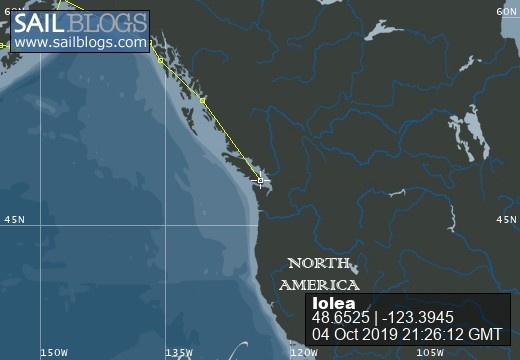
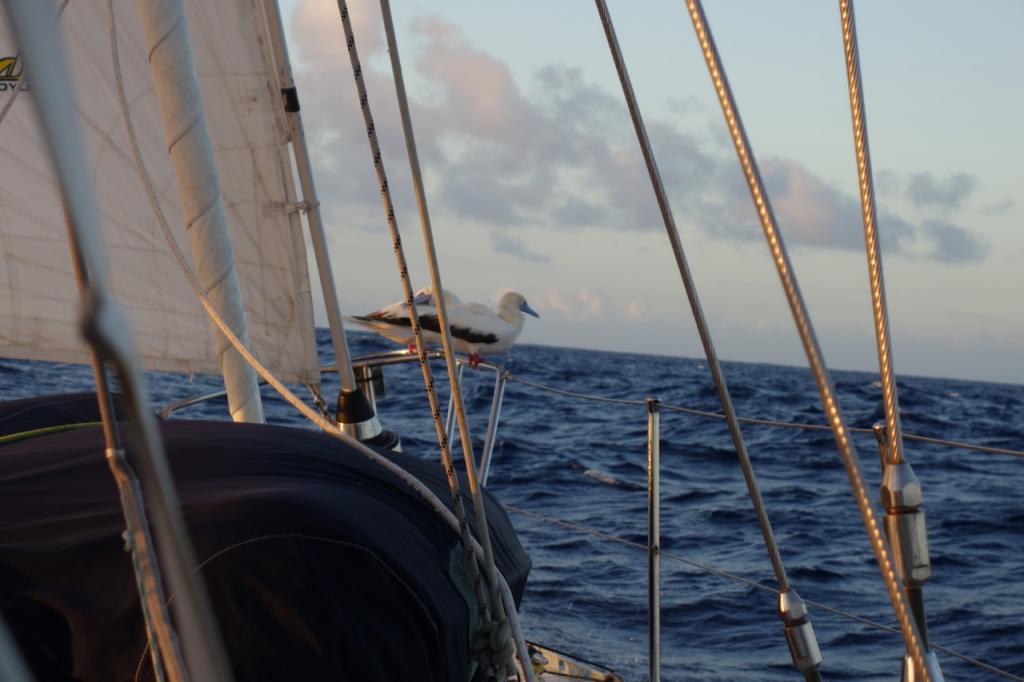

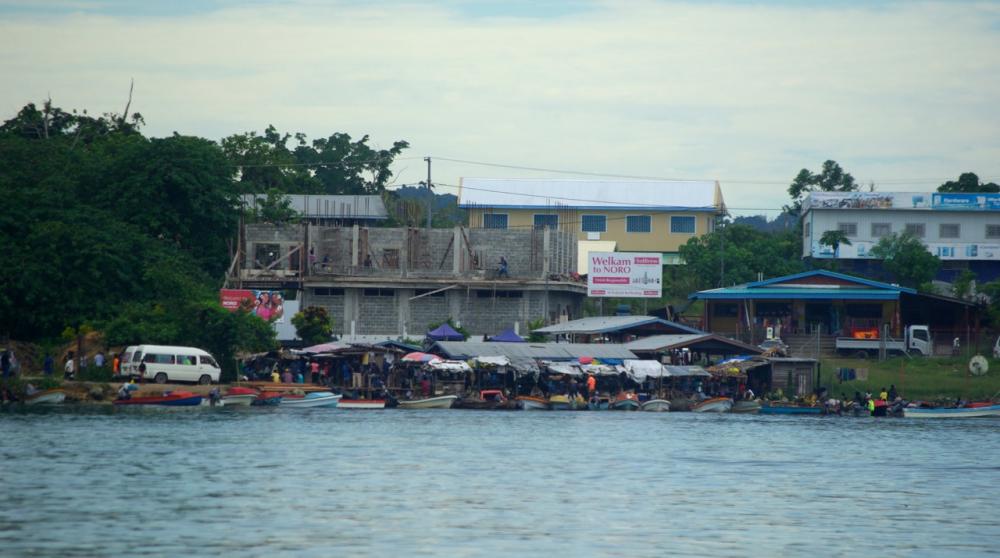
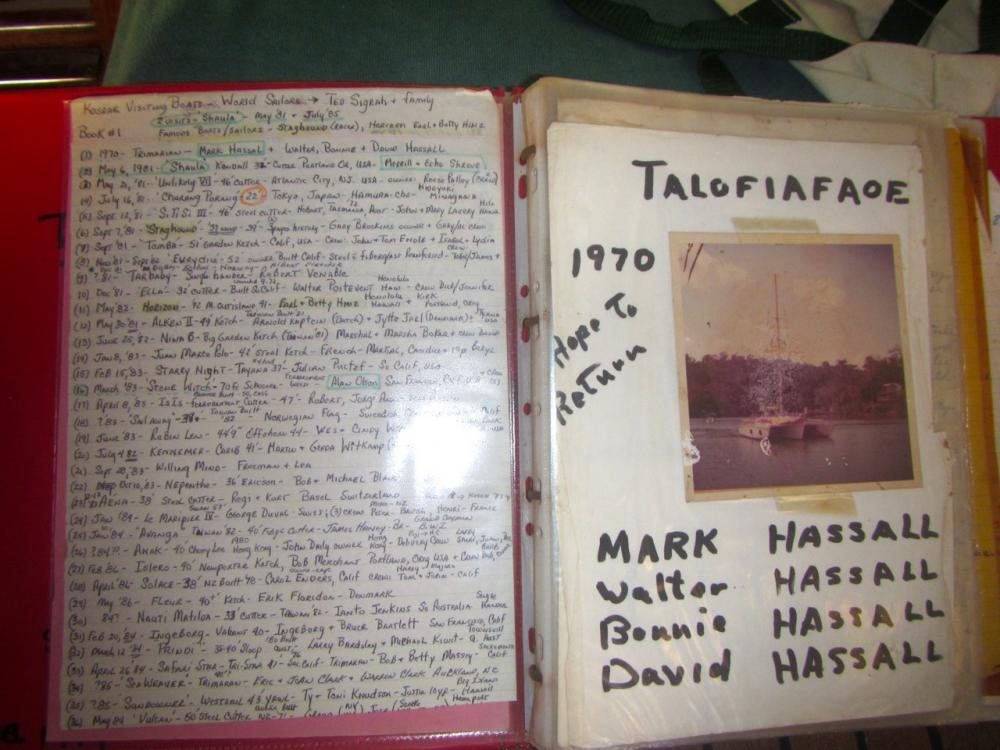
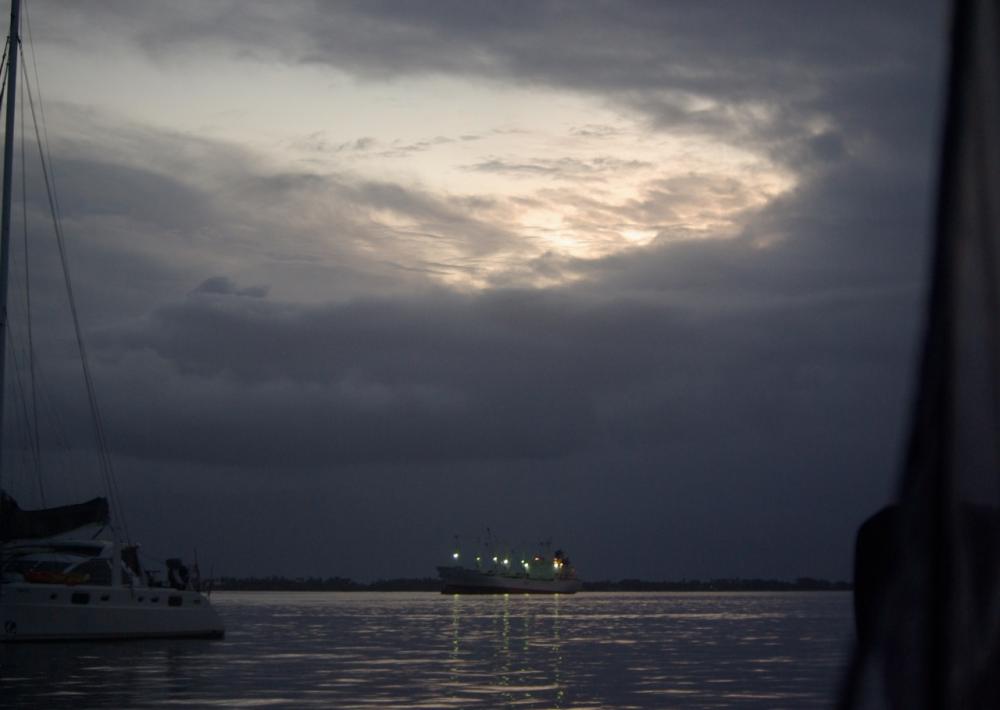

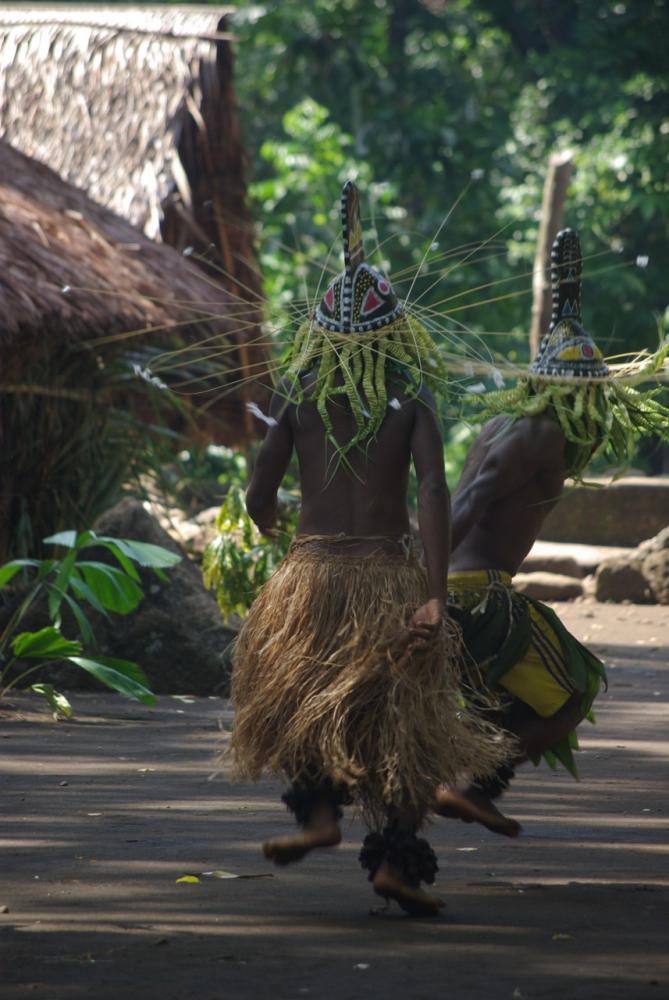
.jpg)
